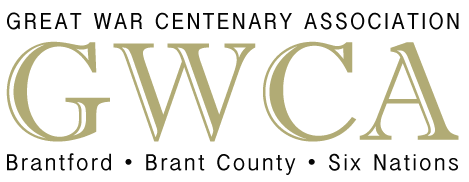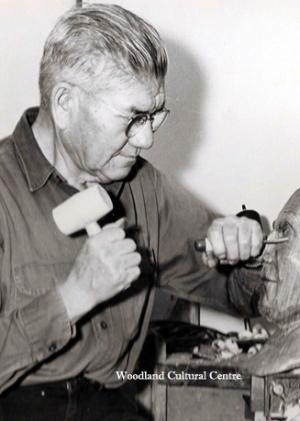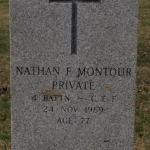Indian News, Volume 10, Issue 1 – April, 1967
Delaware Carves Celestial Bear
Mr. Nathan Montour, 74 years old Delaware of Algonkin stock is earning a reputation for himself as a carver. (The Delaware tribe was adopted by the Cayuga Nation in 1763.)
His career as a carver dates back to 1902 when at the age of nine he was taught by his grandfather the rudiments of being a good carver. He eventually left carving and became a machinist and his first job in 1911 was at Yale Lock in St. Catherines, Ontario.
At the outbreak of the First World War, Mr. Montour enlisted with an Infantry Battalion and with little training was one of the first shipped over to the fighting in Europe. It is his claim, that he was the first Indian warrior wounded during the Great War. After the hostilities, Mr. Montour went back to his trade and eventually retired in 1958. To ease a very active life, he began carving for a hobby. Word quickly spread and before long, tourists were buying all he could produce. Much of his work is produced for tourism but he maintains a fine collection of famous Indian busts which he carved and lacquered to a high luster.
At present he is carving a four foot high replica of a bear, to be placed in the Indian Pavilion at Expo ’67. It is made from one inch laminated lumber. The reason for this, as Mr. Montour explained, is the scarcity of trees in the area being the right size to work with. Although it is possible to carve a bear from a “green” tree, it would eventually crack as it dried and to have this happen while standing on display would indeed be a catastrophe.
When completed the celestial bear will have tribal symbols on its body, representing the clans of many tribes.
The religious significance of the celestial bear in the Indian way of life, particularly the Algonkin, was very great. In their eyes, the whole universe is related to the objectives and trials of man. Each has some bearing on the lives of the individual Indian. The bear in this case illustrates the closing of this gap and the bringing of the religious aspects of earth and sky together.
In the old Delaware belief, the celestial bear acted as the mediator between the Great Spirit and the Indians as well as a protector of the Indians. This belief is widespread among the Indians of the Atlantic coast area and differs little in detail from one tribe to another.
The Delaware believed the big dipper, which can be seen on clear nights, represented the hunting of the celestial bear. The four stars forming the irregular triangle mark the body of the bear and the three stars indicating the handle of the dipper depict the three hunters. The little star, just visible beside the second star from the body of the bear is that of a dong belonging to one of the hunters. It is believed the slaying of the celestial bear by the celestial hunters is done in the autumn and the reddening of the leaves is an indication of the blood dripping down to earth. Likewise the early winter snow is the drippings of grease falling on the earth as the sky hunters taste it.
With the Algonkin eye, picture the Great Bear (big dipper) revolving around the North Star.
Spring – Ascending, head up out of his den
Summer – Standing upright
Autumn – Descending, head down into his den
Winter – Lying on his back in hibernation
The close cycle of the celestial bear and their earthly counterparts had fastened the imagination of communication between them, thus giving them a religious significance.
The Delaware Bear Sacrifice Ceremony was a very religious tradition, handed down from long forgotten generations. It was usually held at the first phase of the moon in January. This would coincide with the bears' spring awakening. The ceremony required 10 to 12 days for its performance. It began with the capture and slaying of a bear and preparation of its flesh for the feast as a fulfillment rite ordained by the Great Spirit. The belief is that the spirit of the slain bear returns to life a year later as cubs, providing certain rules are observed in the slaying and treating of the remains. The first night, a tug of war was staged between two teams of men representing the men's side and the women's side of the big house. (Ed. note: The big house is the same as the Iroquois long house, used as a gathering. place for worship and dances.) The first four nights and part of the fifth was given over to sermons of thanksgiving delivered by the chief of the band. On the fifth night, with the moon about half full, the men who had been blessed with visions would chant to the people assembled. When the moon had blossomed into fullness, about the eighth or tenth night, they chanted dreams and danced formal and social dances all night. The bear, having been sacrificed at the beginning of the festivities, and having been prepared by special cooks, is now eaten at a general feast. This ends the Bear Sacrifice Ceremony. Because this belief is wide-spread among the Indian people of the east coast it was thought appropriate that this should be incorporated into the Indian Pavilion at Expo '67.
BX November 25, 1969
Nathan Montour – Famed Indian Carver is Dead
Nathan F. Montour, and Indian carver whose work was featured at Expo 67 and Joseph Brant Museum in Burlington died Monday at Brantford General Hospital.
The 77 year old Delaware Indian carved the Celestial Bear for the Indian pavilion at Expo 67, and recently completed a bust of Joseph Brant for permanent display at the Burlington museum. His work has been displayed in many local exhibitions and in the United States.
Mr. Montour took up his carving hobby after retiring from the Canadian Gypsum Company Limited plant in Hagersville in 1958. He was a machinist.
Born on the Six Nations Reserve, he married Mrs. Irene Peters, the former Irene Garlow and widow of George Peters.
Mr. Montour is a veteran of both the First and Second Word Wars, serving with the 4th Battalion, 1st Brigade and with the Veterans Guard.
He is survived by his wife Irene; step-sons, Bart Peters, John Peters and Phil Peters, all of R1 Ohsweken, George Peters of Buffalo; step-daughters Mrs. Gordon (Helen) Longboat of R1 Ohsweken, Mrs. John (Dorothy) Wilson of R6 Hagersville; two brothers, Rev. Enos Montour of Moosejaw, Sask and Ralph Montour of Hamilton.
Mr. Montour will be at Styres Funeral Home, Ohsweken, until 12.30 p.m. Wednesday, when he will be taken to the Delaware United Church. Funeral service will be at 2 p.m. with interment in the adjoining cemetery. Rev. Kenneth Welch will officiate.


